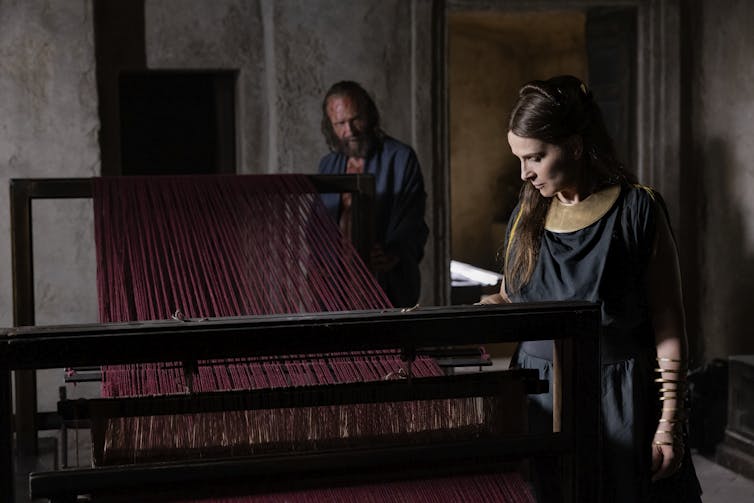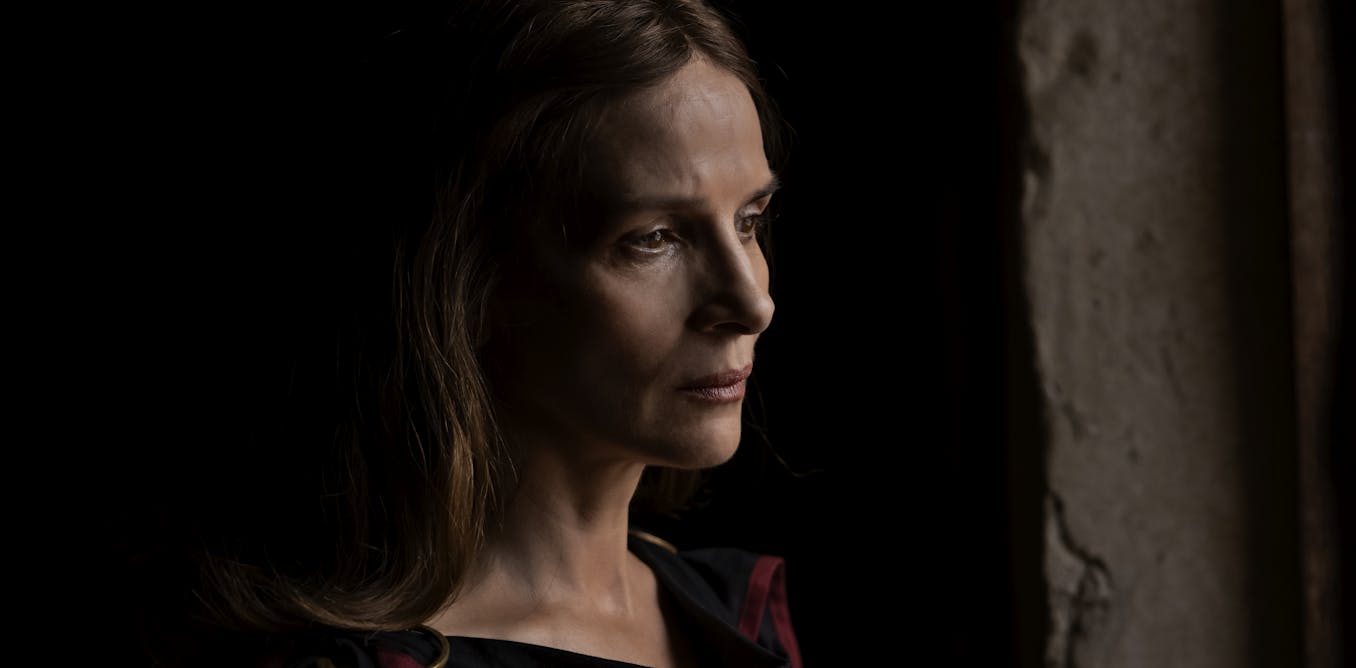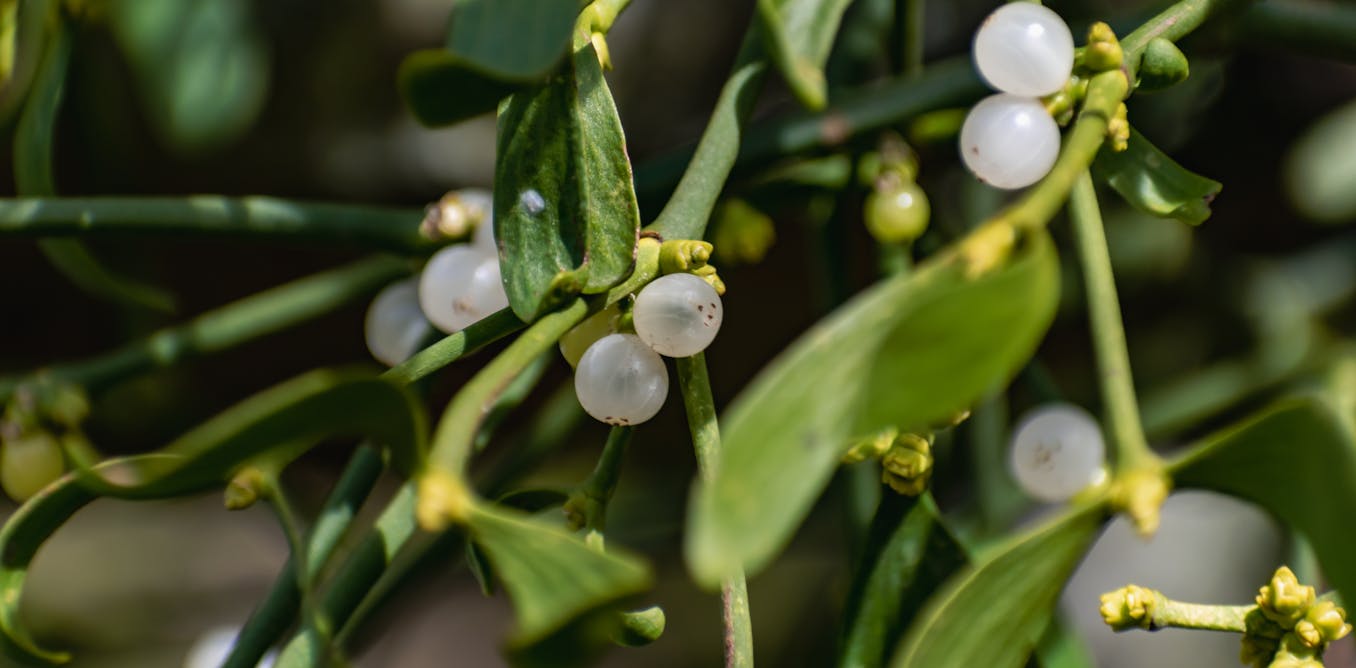Waves crash across Ithaca’s rocky shore. “The city of Troy has fallen,” we are told, as the shuttle on Penelope’s loom flickers across the screen. “On the island of Ithaca, Queen Penelope still longs for the return of her husband Odysseus.” The camera then cuts to the wreckage of a ship and the body of a man washed up on the beach – naked, dishevelled, scarred.
This is the beginning of the new Odyssey-inspired film starring Ralph Fiennes and Juliette Binoche, The Return.
The Odyssey, the ancient Greek epic poem ascribed to the poet Homer, charts the return home of its eponymous hero, Odysseus. For half the epic poem, we follow the hero as he struggles, sometimes against fantastical monsters and goddesses, sometimes against himself and his crew, to return.
But Ralph Fiennes’s Odysseus is not stranded on his travels. He has already returned home. Home to Ithaca but not quite home to Penelope.
It has often been said that the Odyssey shows a marked interest in its women – Penelope, perhaps, above all. Odysseus makes it clear that returning home is about much more than the literal voyage to Ithaca. What he wants, he says (in Emily Wilson’s translation) is a reinstatement to “the joys of home”, and to partnership with “my wife”.
Looking for something good? Cut through the noise with a carefully curated selection of the latest releases, live events and exhibitions, straight to your inbox every fortnight, on Fridays. Sign up here.
Retelling the Odyssey’s women
Many retellings, particularly those in recent years, have been interested in giving the women of the Odyssey more agency and voice. The Return is no exception: it is made quite clear that Penelope and her recognition of Odysseus are central to his reintegration into Ithaca.
The film is centred on her refusal to choose one of her suitors, and Odysseus’s fear – in the face of her anger at being forced to wait for him for 20 years – that she might not want him back. After battles with female monsters and rest-stops with enchanting goddesses, Penelope is the final and greatest woman he must face and win back.
Putting Penelope at the centre of the tale follows a line of recent reinterpretations of Odysseus’s return that have taken Penelope’s point of view more explicitly – most notably, Margaret Atwood’s The Penelopiad (2005).
Here Penelope’s version of the story is used not only to emphasise the costs (and compromises) borne by the archetypal patient wife in her husband’s absence, but also to shed light on the sheer violence and bloodshed of Odysseus’s return. In particular, it highlights the victimisation of the 12 enslaved women raped by Penelope’s suitors, who are later hanged for their actions by Odysseus’s son.
Wilson made similar strides in her 2018 translation of the Odyssey – the first into English by a woman. In it, she stripped away the judgments imposed on Odysseus’s enslaved women by earlier male translators that suggested they deserved what they got.
We see some similar, if less pointed, changes in The Return. Penelope is quick to condemn the violence of war (“Why do men go to war?” she demands), and then the bloodshed Odysseus brings into her home.
Binoche plays Penelope with a brittle resilience that is both moving and powerful. Though quiet, she refuses to move her ground, and the words she speaks are always charged with meaning. Yet it is worth noting that the film – despite Atwood and Wilson’s interventions in reminding readers of their existence and changing how they are perceived – does not include the execution of the enslaved women.
Real Greek women
In my new book, Mythica: A New History of Homer’s World, through the Women Written Out Of It, I also explore what the Odyssey (and Homer’s other epic, the Iliad) might look like from the women’s point of view – using the latest archaeological evidence and newest scientific analysis of ancient DNA. I use these findings as a window into the worlds of the real women who might have inspired the myths and legends of the Odyssey.
Take, for instance, discoveries of spinning and weaving equipment that belonged to queens who once ruled in the historical kingdoms like Mycenae, Pylos and even Troy. The Homeric epics, the Iliad and Odyssey, are full of scenes of women weaving in the Greek palaces of legend.
Perhaps most famous is Penelope’s weaving: the famous ruse in which she wove and unwove her weaving and so delayed the suitors’ demand that she choose one of them for marriage.

Modern Films
Penelope is said in the Odyssey to have been weaving for three years before her trick was revealed. It’s been suggested that she was making what’s known as a “story cloth” – a tapestry detailing narratives.
Such “story cloths” have been found in the Greek world, dating back to the 4th century BC, from the shores of the Black Sea. The idea of Penelope weaving her own story in thread is a particularly rich one – making her a poet of her own story to rival the poet of the Odyssey (though her tapestry, of course, unravels to make space for Odysseus).
The red, yellow and purple dyes women used to dye the threads they spun and wove with have also been recovered from minuscule traces on prehistoric pots.
In Pasolini’s The Return, we see Penelope weaving with blood-red thread. This is probably meant to represent the ancient colour porphyreos, or reddish-purple, that was so expensive it came to be called “royal purple”. It’s a word (and shade) that’s also used for blood in the Homeric epics – so anticipating the bloodshed of Odysseus’s return.
To me, starting from the history that surrounds legend and myth is a radical way into the stories of women like Penelope. It allows us to understand them from the experiences and activities of actual, historical women of the Greek past.
The Odyssey has been retold and will continue to be retold countless times. I found The Return to be a moving, tightly theatrical version of the closing scenes of the Odyssey. It puts Penelope at the heart of the drama. The foregrounding of her role is a particular highlight and Binoche plays her spectacularly well.
We have director Christopher Nolan’s take on the Odyssey to look forward to next in July 2026. It remains to be seen how Penelope, and the enslaved women, will be treated there.
However, with every new retelling comes the opportunity to draw attention to the central roles of female figures in this ancient epic.

The post “how each new retelling of The Odyssey opens up the worlds of the women in this epic” by Emily Hauser, Senior Lecturer in Classics, University of Exeter was published on 04/09/2025 by theconversation.com





































Leave a Reply